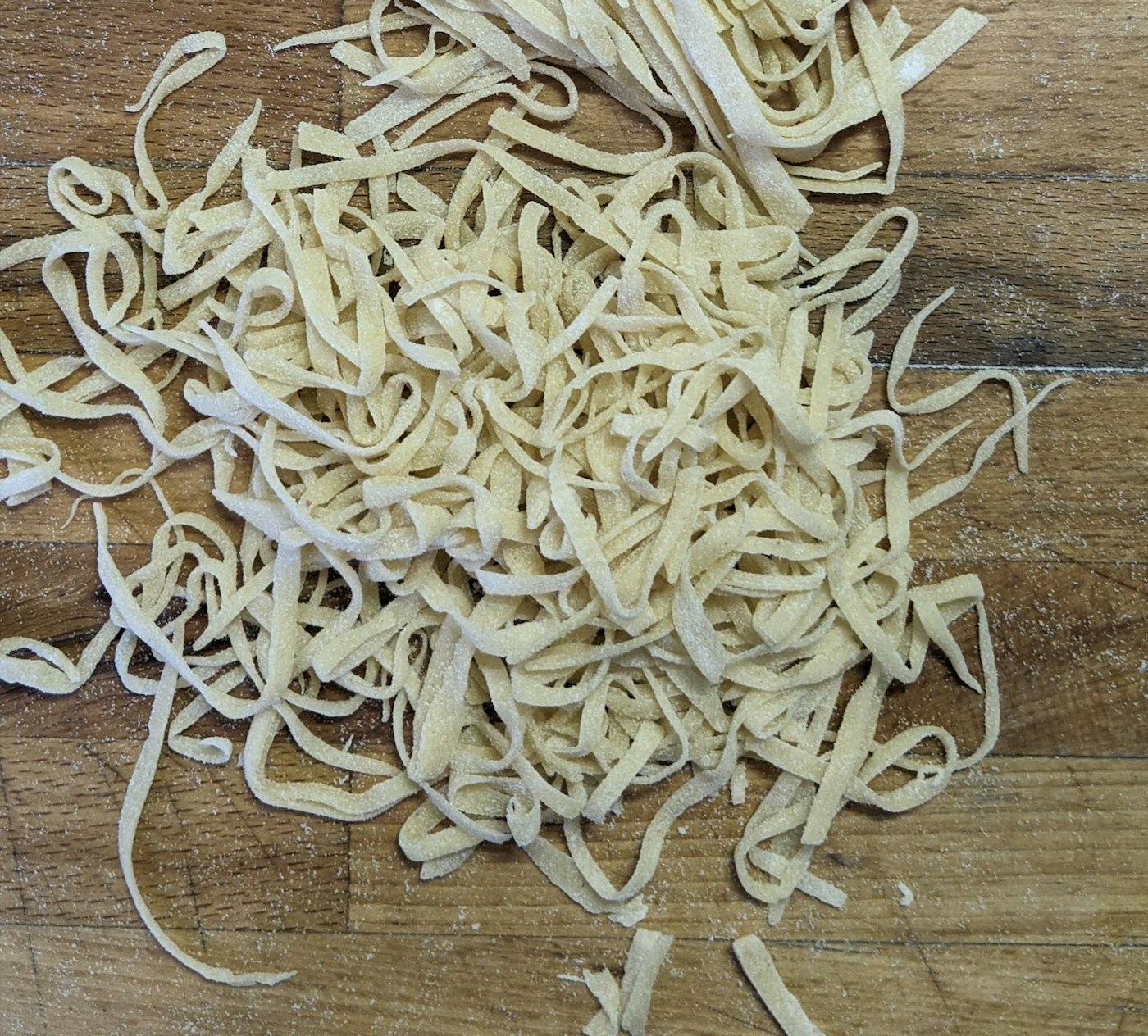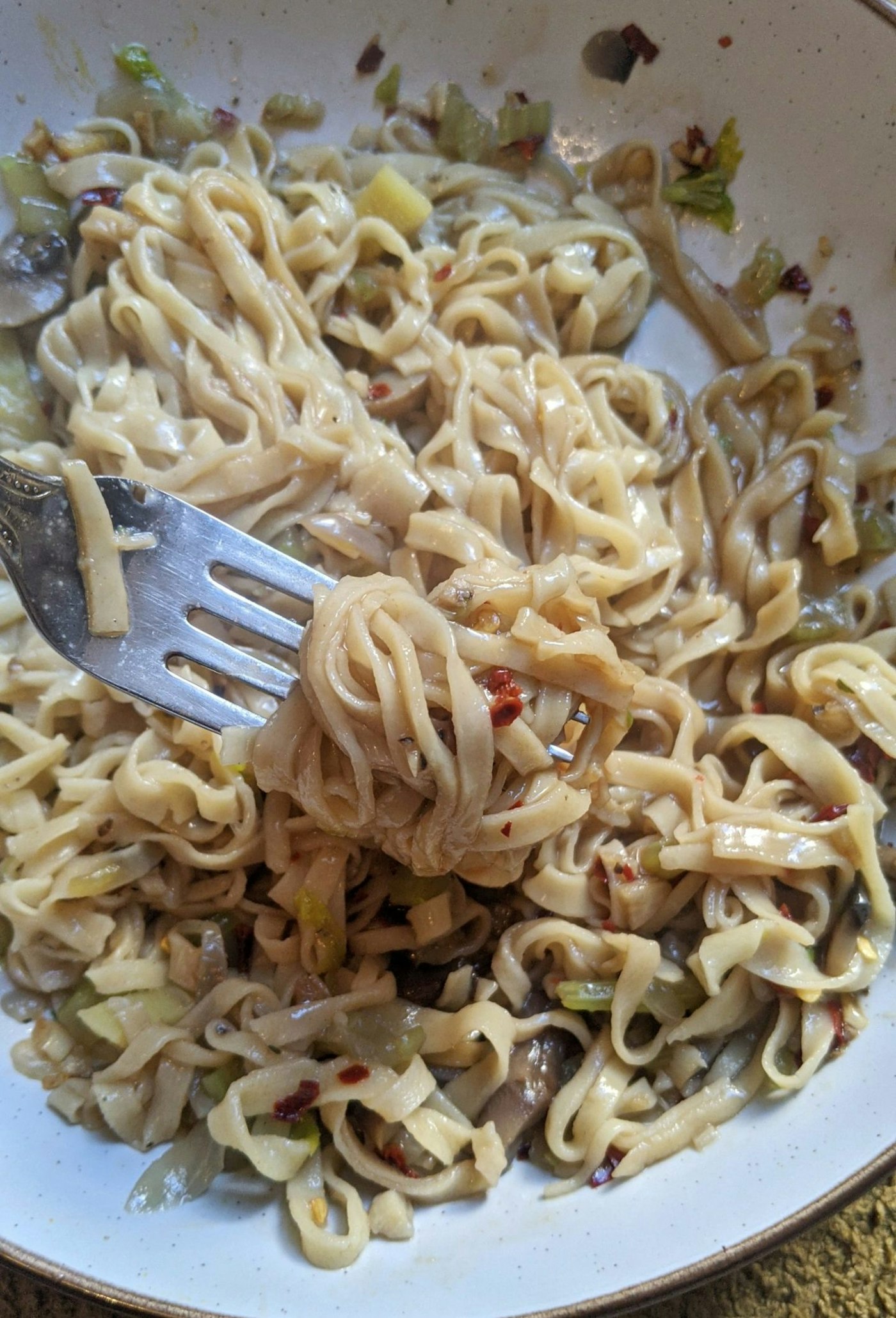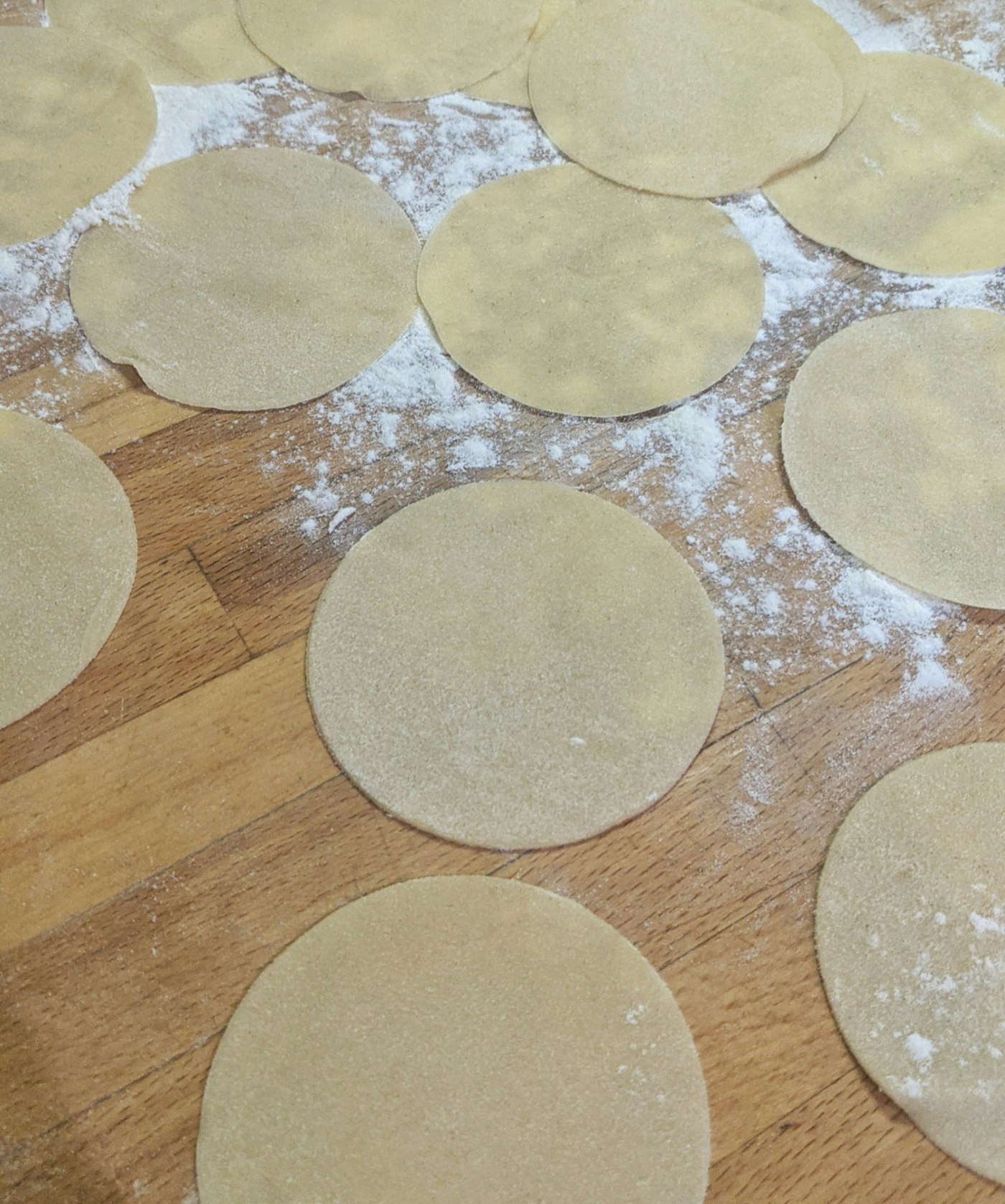How to Make Noodles and Ravioli From Scratch Without a Pasta Maker or Pasta Flour
by Nafisa Bakkar in Culture & Lifestyle on 12th April, 2021

Making noodles and pasta from scratch is probably one of the ultimate love of labour recipes you can do, between the hours of resting, intense kneading and rolling till the dough is paper-thin, this is not something to make when you need a quick bite! But the joy of knowing you made every single bite from scratch is unparalleled to a quick bite to eat.
Pasta and noodle-making probably seem quite intimidating to make, especially if you don’t have a pasta maker or special flour for pasta, but this recipe uses ingredients you are likely to have at home, all you will need is plain flour, egg, salt, baking powder and a little strength and lots of patience.
I once read that recipes should be consulted, not followed and so this recipe and ingredient list is based on an amalgamation of these videos here, here and here and you can watch my version here on Instagram. For a step by step, keep scrolling here!
HOW TO MAKE NOODLES WITH PLAIN FLOUR BY HAND
These Chinese egg noodles are beautifully silky and firm, it is hard to make them soggy when cooked. I served them with a homemade chilli oil which was the perfect partner. The dough can be wrapped in cling film and left in the fridge for up to two days to use another time. Just take it out the fridge an hour or two before you intend to roll it out.

Ingredients:
Should make about 4 small servings of noodles (I used half for noodles 2 portions and the other half to make ravioli – see below!)
250g of plain flour
1 tsp / 3g of baking powder
1 tsp / 3g of salt
1 egg
3 tbsp of water

Method
1. Mix all the dry ingredients into a bowl
2. Add in the egg and mix with your hands, it will seem very dry and probably feel like it will never become a smooth ball but be patient and keep going
3. This dough generally will be quite firm but if it feels very dry even after lots of hand kneading and mixing then add, tentatively a tbsp of water at a time
4. Keep combining and kneading for about 5-10 mins and it should be getting smoother and a bit more pliable than to begin with

5. Wrap in cling film and leave to rest for 30 minutes
6. Come back to it and then knead again for 10 mins, in one of the videos they bashed the ball of dough on all sides with a rolling pin, apparently, this is to help gluten release and make the dough softer, it seemed to work!
7. Wrap again in cling film and leave to rest for 2 hours (I told you it is a long process)
8. Now your dough should be ready, cut in half and use half at a time, the final sheet will take up a lot of counter space so it is best to do this in batches (or use your second half to make ravioli – see below!)

9. Now you are in the long haul, lightly dust your surface with flour, use your rolling pin to roll it out till the dough is paper-thin, this took me about half an hour. I found it was helpful to put as much of my pressure from my body to roll it into a thin sheet, you want to go for something like an oval/rectangle, the length will be how long your noodle strands will be and the width will affect how many times you fold it when it comes to folding and cutting your noodles.
When the dough is sufficiently thin, it should be nearly translucent, in that you should be able to see your worktop coming through slightly
10. Now fold in a concertina style (see video at 2:35 for an example), make sure you flour both sides of the dough and flour in between the folds so that you don’t want too many folds as in the next steps you will be undoing these folds, one strand at a time
11. Now to cut the strands, you can go as thick or thin as you want
12. Once cut add a little flour and pick up portions of the noodles with your fingertips to try and untangle them
13. Then go through each one and make sure they are fully unfolded
14. You are now ready!
15. Boil for 3-4 mins, you can boil in a broth (recipe below) or just salted water like normal noodles and pasta. Take out and taste as you go to see how cooked you want them
16. Mix with a chilli oil
17. Enjoy!
BROTH
This broth is optional.
- Chop the veg up – any veg you like, I used celery, onion and mushrooms as this is what I had, you could also use carrot.
- Saute in butter with finely cut garlic
- Add water and bring to boil with salt, veg cube, pepper, ginger
CHILLI OIL
This brings alive the beautifully silky and bouncy noodles, this is a super basic version!
- Add chilli flakes, a dash of brown sugar and soya sauce to a small bowl
- In a pan heat finely chopped garlic cloves to oil, don’t let them brown, I use sesame oil as I like the taste, most recipes use an unflavored oil
- Add the garlic and oil into the chilli flake mix, top up with soy sauce or oil as needed
HOW TO MAKE RAVIOLI WITH PLAIN FLOUR AND NO PASTA MAKER
This ravioli recipe used half of the dough that I left aside the next day.

RAVIOLI
Roll out in the same way you did your noodle sheet, trying to get your sheet as thin as possible.
Cut out circles, I used a small metal bowl I had.

FILLING
I stuffed these with a mushroom filling and served them with a homemade bechamel sauce (loads of recipes for this on the internet). It was absolutely divine, between the thin pasta and the flavourful filling and the white sauce, it was mouthful after mouthful of pure indulgence.
I totally winged the filling but it tasted amazing, especially with the bechamel.
- Cut up white mushrooms and chestnut mushrooms and then blend it in a food processor, the filling should be smooth as possible and this step helps.
- Separately blend half a small red onion and a couple of cloves of garlic so they are finely chopped
- Saute the onion and garlic in sesame oil, add in the mushrooms and let it fry down
- Season with salt, pepper, a dash of soy sauce and fresh coriander chopped as finely as you can
- Leave to aside and let cool down, in this process you may see a lot of water come out so get rid of it as you don’t want it to make the ravioli too wet
- Depending on the size of your circles, add a small amount and then add another pasta circle on top, you shouldn’t need any water to seal them
- The key thing is to make sure there is no air and to press it out gently as you seal around
- Now you’re ready to boil, add to hot boiling water for about 3-4 minutes (depending on size)
- Serve with a sauce of your choice and enjoy!

Nafisa Bakkar
Co-founder and CEO at Amaliah Find her @nafisabakkar on IG and Twitter